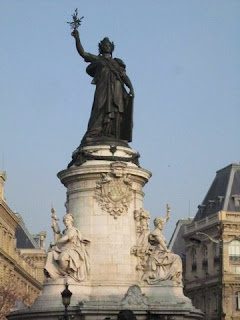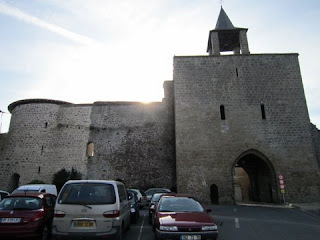Sometimes, for all of its beauty and wonders, the crowded bustle of Paris can make you long for the countryside. We boarded the TGV at 7:45 a.m., picked up our rental car in Poitiers at 9:30, and by noon reached Parthenay, in La France profonde—the France of villages and fields and small provincial towns.
From the ancient citadel we looked west over the 13th century walls, to where a hiker passed on the road below and the arches of Pont Saint-Paul made circular reflections in the River Thouet.
To the east, we could trace, in the curved line of space between the red tiled roofs, the Vau Saint-Jacques, the winding street along which medieval pilgrims walked toward Saint-Jacques de Compostela. In the tower itself, an old prison door slept, mouldering on its hinges.
Leaving Parthenay, the main roads are shown on the map in red and yellow. If you turn off onto the white roads—or those that don’t show at all—you find yourself among rolling fields, hedgerows, old wooden gates, pollarded trees. At a curve in the road, a village, or a hamlet.
We parked and walked along a grassy track, accompanied by a cat who adopted us for the afternoon, rubbing up against our legs, rolling at our feet for attention. The local cows—Parthenaise—approached a fence to watch us pass. We walked slowly, eased by the long green views and the quiet, pausing to look at marguerites in the roadside grass.
And in the countryside on a still day, it’s possible to catch the past off-guard—more vulnerable than in a museum display case, or in monuments replete with informational placards, guards, and tourists.
In the hamlet La Bouillacrère, a low house had been stuccoed and painted along its façade, but on the end wall, old stones whispered of when it had been a stable, animals kept close by the living quarters, sharing warmth.
Across the lawn, roses mingled with reflections in a pond, and poplars lobed with mistletoe reached into a timeless sky.






















































